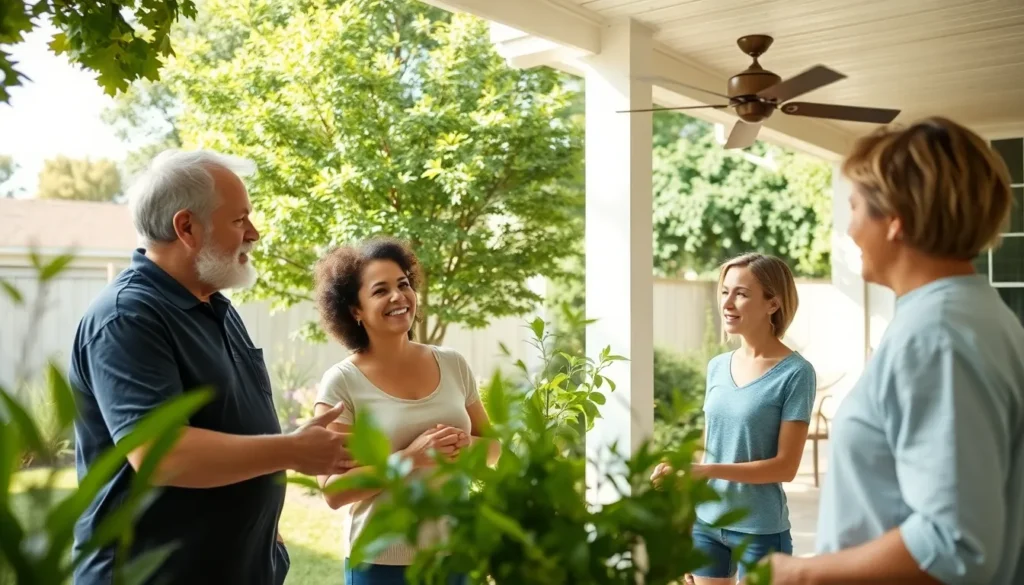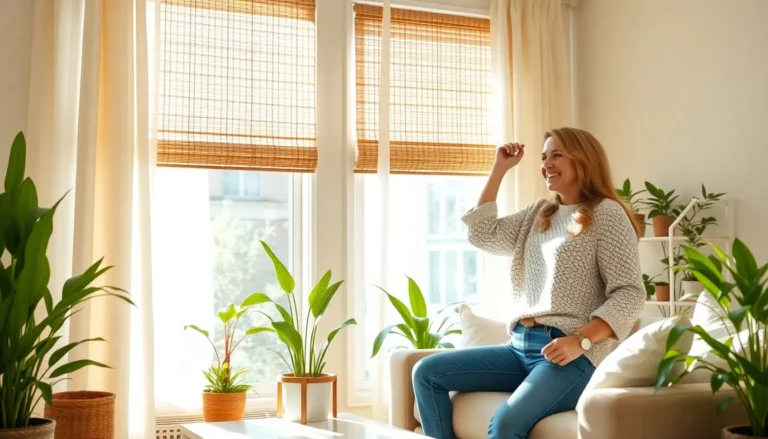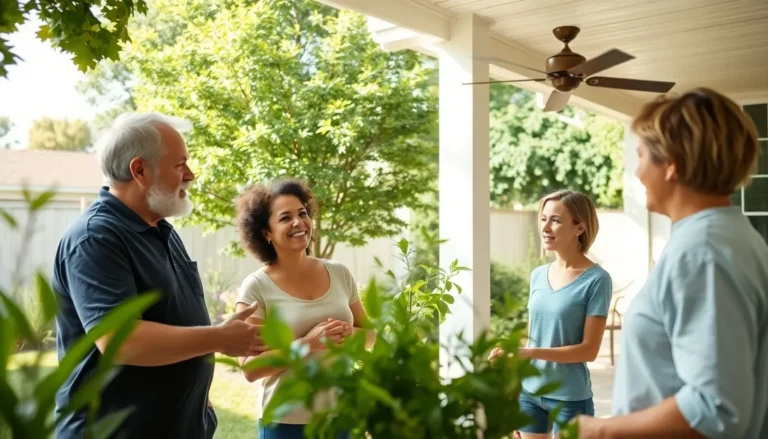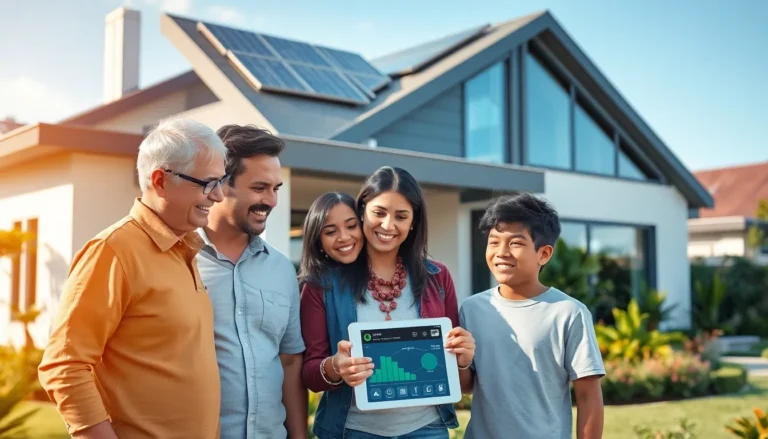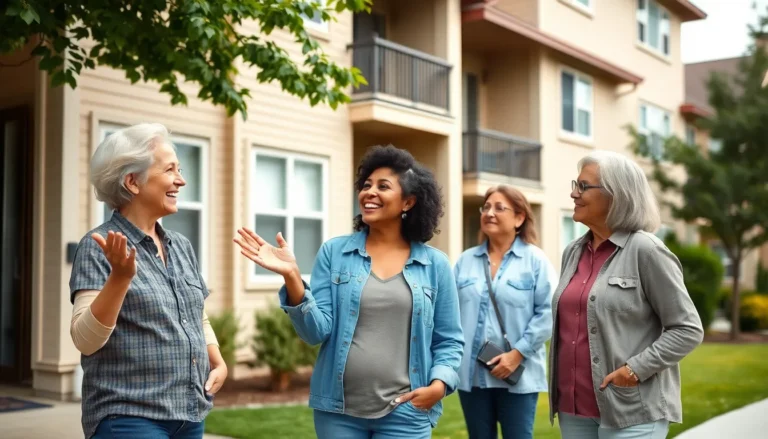As summer sizzles and temperatures rise, the battle against heat can feel like a never-ending game of hide and seek. But what if there was a way to keep your cool without emptying your wallet? Enter cooling energy conservation, the superhero of summer savings. It’s not just about cranking up the AC and praying for relief; it’s about smart strategies that keep your home comfortable while saving energy—and money.
Imagine lounging in your living room, enjoying the chill, all while knowing you’re doing your part for the planet and your bank account. With a few simple tweaks, anyone can master the art of cooling energy conservation. So grab a cold drink and get ready to discover how to beat the heat without breaking a sweat or the bank.
Table of Contents
ToggleOverview of Cooling Energy Conservation
Cooling energy conservation focuses on methods to reduce energy consumption while maintaining comfort during hot months. Strategic techniques offer alternative ways to stay cool beyond traditional air conditioning systems. Implementing adjustments like installing ceiling fans circulates air, enhancing cooling without excessive energy use.
Home insulation plays a vital role in cooling efficiency. Proper insulation minimizes heat gain, lessening reliance on air conditioning. Reflective window films or shades can block unwanted sunlight, keeping indoor spaces cooler.
Tree planting around residences provides natural shade and lowers surrounding temperatures. Vegetation naturally cools air and improves energy efficiency. Energy-efficient appliances also contribute significantly to cooling energy conservation.
Regular maintenance of HVAC systems ensures optimal performance and longevity. Checking air filters, cleaning ducts, and scheduling professional servicing reduces energy waste. Programmable thermostats enable precise temperature control, allowing users to set cooling based on occupancy patterns.
Proper landscaping strategies can enhance cooling efforts significantly. Incorporating drought-resistant plants and native species assists in lowering temperatures near homes. Passive cooling techniques, such as cross-ventilation, improve airflow and reduce the need for mechanical cooling.
Engaging in energy audits identifies areas for improvement in energy conservation. Such assessments reveal inefficiencies, guiding homeowners toward smarter energy use. Conserving cooling energy fosters both environmental responsibility and cost savings, making it an essential aspect of sustainable living. Adopting these practices cultivates a comfortable, eco-friendly atmosphere.
Importance of Cooling Energy Conservation
Cooling energy conservation plays a crucial role in promoting sustainability while ensuring comfort during the warmer months. Adopting energy-efficient practices yields significant advantages for both the environment and individual finances.
Environmental Impact
Cooling energy conservation leads to reduced greenhouse gas emissions. Implementing energy-saving measures lowers the demand for electricity, which often relies on fossil fuels. Less energy consumption lessens the overall carbon footprint in residential areas. Using reflective window films, for example, not only maintains indoor temperatures but also contributes to a decrease in energy demand during peak hours. Trees planted for natural shade can absorb CO2, enhancing air quality and fostering biodiversity. Overall, these sustainable practices help protect the environment for future generations.
Economic Benefits
Economic benefits arise from cooling energy conservation strategies. Homeowners enjoy lower utility bills when reducing energy consumption. The investment in energy-efficient technologies, such as programmable thermostats, often leads to significant savings over time. Regular HVAC maintenance also prevents costly repairs, extending system lifespans. Studies show that homes with adequate insulation reduce reliance on air conditioning, leading to annual savings of 15-25% on cooling costs. Additionally, energy audits can identify inefficiencies, allowing homeowners to target specific areas for improvement.
Techniques for Cooling Energy Conservation
Cooling energy conservation encompasses various techniques that enhance comfort while reducing energy consumption. Understanding these techniques enables individuals to make informed choices in their homes.
Passive Cooling Strategies
Passive cooling strategies utilize natural elements to reduce heat inside a building. Proper insulation helps maintain cooler indoor temperatures by preventing heat from entering. Implementing shades or awnings on windows minimizes solar gain during peak sunlight hours. Strategically placed trees can provide natural shade, further reducing cooling needs. Ventilation techniques, such as cross-ventilation, allow cooler outdoor air to circulate through living spaces. Additionally, roof overhangs can block direct sunlight, helping keep interiors comfortable.
Active Cooling Systems
Active cooling systems involve mechanical methods to regulate indoor temperatures. Installing energy-efficient air conditioning units significantly lowers energy consumption. Programmable thermostats provide precise temperature control, automatically adjusting settings based on occupancy. Ceiling fans distribute cool air evenly, making rooms feel more comfortable with less reliance on air conditioning. Utilizing energy-efficient HVAC systems reduces overall energy use and helps maintain a consistent indoor climate. Regular maintenance of these systems ensures optimal performance, prolonging their lifespan and reducing unexpected repair costs.
Challenges in Implementing Cooling Energy Conservation
Implementing cooling energy conservation faces various challenges that can hinder its effectiveness. Understanding these barriers is essential for successful adoption.
Technological Barriers
Technological barriers often impede the transition to energy-efficient cooling methods. Older HVAC systems may not support modern energy-saving technologies. Furthermore, the upfront cost associated with upgrading to energy-efficient units deters many homeowners. Limited knowledge about available technologies can lead to underutilization of resources. Additionally, a lack of incentives from local governments or utilities can slow down the adoption of innovative solutions. Without proper technological support, energy conservation efforts struggle to gain traction.
Behavioral Challenges
Behavioral challenges significantly impact the adoption of cooling energy conservation practices. Many individuals remain unaware of simple actions that can enhance energy efficiency. Resistance to change often prevents people from modifying their habits, even if the benefits are clear. People may also prioritize immediate comfort over energy savings, leading to short-term decision-making. Educational outreach can help bridge the knowledge gap, fostering a better understanding of energy-efficient practices. Promoting community engagement may encourage collective action toward sustainable cooling solutions.
Future Trends in Cooling Energy Conservation
Innovative technologies are emerging to enhance cooling energy conservation. One significant trend includes the integration of smart home systems. These platforms enable precise control of heating, cooling, and ventilation through mobile devices.
In addition to automation, sustainable materials gain traction in building designs. Materials like cool roofs and reflective insulation minimize heat absorption. Enhanced insulation techniques also play a critical role. Improved insulation materials increase energy efficiency, leading to reduced HVAC workload.
Moreover, advancements in cooling technologies continue to evolve. Solid-state cooling and thermoelectric systems offer eco-friendly alternatives to conventional air conditioning. Implementing these solutions results in lower energy requirements and emissions.
Emerging trends in climate-responsive design are on the rise. Architects increasingly focus on natural ventilation and passive solar techniques. These approaches utilize wind patterns and sunlight to regulate indoor climates. Urban landscaping also supports cooling efforts by incorporating green roofs and vertical gardens.
Regulatory frameworks are beginning to encourage energy-efficient practices. Governments implement incentives for adopting renewable energy sources, including solar power. Financial benefits from tax credits and rebates incentivize homeowners to invest in energy-efficient upgrades.
Collaboration among industries fosters innovative approaches. Partnerships between technology providers and construction firms create cutting-edge cooling solutions. Research and development efforts target breakthroughs in energy-efficient cooling systems.
In the realm of behavioral change, community awareness initiatives gain importance. Education campaigns raise awareness about energy-efficient practices. Engaging residents in local activities promotes a culture of sustainability, empowering them to prioritize cooling energy conservation.
Conclusion
Embracing cooling energy conservation is a smart choice for anyone looking to enhance comfort while being mindful of the environment and their finances. By implementing both passive and active strategies, individuals can significantly reduce energy consumption and lower utility bills.
Investing in energy-efficient technologies and maintaining HVAC systems not only fosters sustainability but also promotes long-term savings. As communities become more aware of these practices, the collective effort towards energy conservation can lead to a healthier planet.
By making informed decisions today, everyone can contribute to a cooler, more sustainable future.

